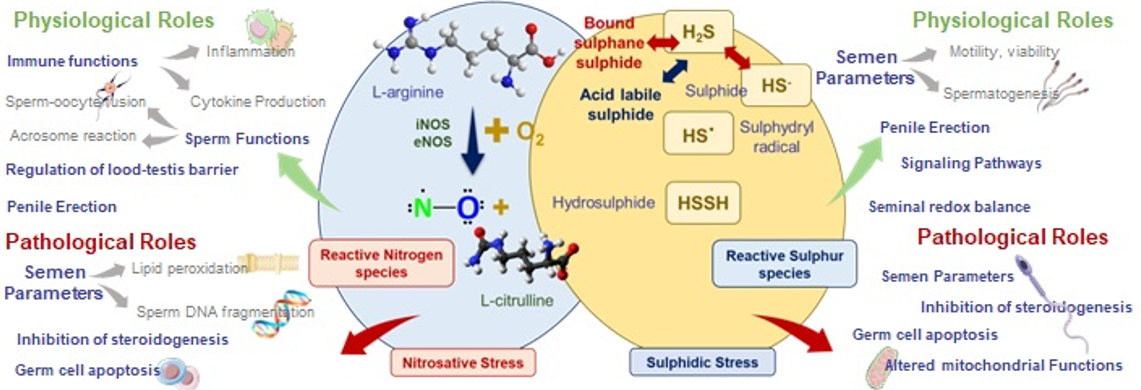Physiological and Pathological Functions of Reactive Nitrogen Species (RNS) and Reactive Sulphur Species (RSS) on Male Reproductive Functions

DOI:
https://doi.org/10.62110/sciencein.jist.2024.v12.755Keywords:
male infertility, nitrosative stress, reactive nitrogen species, reactive oxygen species, reactive sulphur speciesAbstract
Reactive Nitrogen Species (RNS) and Reactive Sulphur Species (RSS) play crucial roles in numerous physiological pathways, including cellular signaling, metabolic cascades, and redox balance maintenance. In male reproduction, these molecules serve dual purposes: they support essential physiological functions but can cause harm if unregulated. This review explores the roles of RNS and RSS in male reproduction, emphasizing their beneficial and detrimental impacts. Physiologically, RNS and RSS aid in sperm maturation, capacitation, and initiating the acrosome reaction. Regulated synthesis of these species is vital for redox-regulated events essential for optimal male reproductive outcomes. Specifically, nitric oxide, a primary RNS, regulates sperm functions and penile erection mechanisms. However, imbalances, leading to excessive RNS and RSS levels, can cause oxidative and nitrosative stresses, which can trigger lipid peroxidation, protein alterations, and sperm DNA fragmentation, affecting sperm vitality, motility, and genomic integrity.
URN:NBN:sciencein.jist.2024.v12.755
Downloads
Downloads
Published
Issue
Section
URN
License
Copyright (c) 2023 Sulagna Dutta, Pallav Sengupta, Antony V. Samrot

This work is licensed under a Creative Commons Attribution-NonCommercial-NoDerivatives 4.0 International License.
Rights and Permission







